Why Retailers Win with Google Shopping, As Told by 13 Ecommerce Experts

“Retail Search Intent” is not yet a common industry term, but the phrase does represent the innovative, driving force behind the ecommerce industry’s rapid growth. In the last couple of years, we’ve seen a fundamental shift in the way consumers are able to find products within Search. Connecting shopper queries with relevant product ads is the science and art of interpreting Retail Search Intent, and no platform has delivered on this better than Google’s ultra-successful Product Listing Ads program.
For Google, it’s been clear that interpreting Retail Search Intent, or search queries indicating a high likelihood to buy, has been its ecommerce focus, and it’s no longer debatable that the result of those efforts, Google Shopping, has grown into the premier product advertising channel for ecommerce merchants. Bluntly stated, any eligible retailer not promoting inventory on Google is antiquated and severely disadvantaged.
To better understand the competitive shift that Product Listing Ads have brought to ecommerce, we bring together an experienced medley of IR Top 500 retailers, Search experts who work with hundreds of retailers, and major ecommerce players to hear their thoughts on investing in Google Shopping and where it will lead us in the foreseeable future.
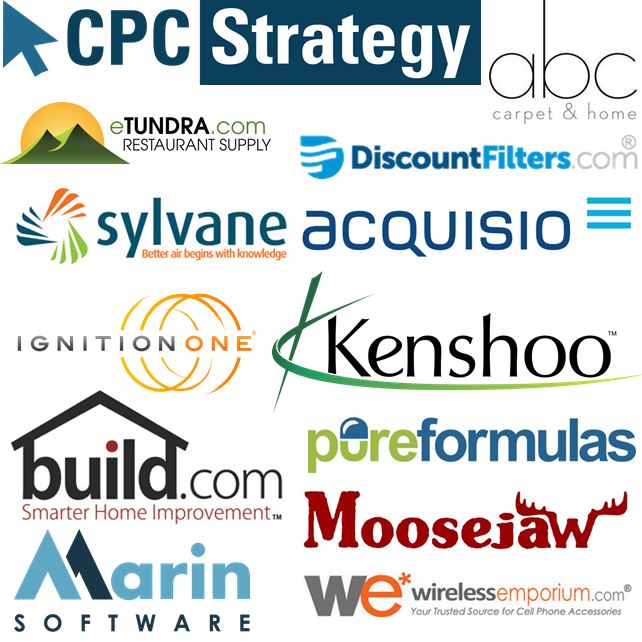 Jump straight to each speaker here:
Jump straight to each speaker here:
 They’re so convenient to implement and the results are usually quite good – users are highly likely to click PLAs, which takes away from the regular search results and the standard AdWords text ads. In a nutshell, good volume, good ROI, and little effort is required to manage them. However the lack of product- level control over bidding is problematic.
They’re so convenient to implement and the results are usually quite good – users are highly likely to click PLAs, which takes away from the regular search results and the standard AdWords text ads. In a nutshell, good volume, good ROI, and little effort is required to manage them. However the lack of product- level control over bidding is problematic.
Google already announced a major change to address the lack of product level control in PLAs: Standard PLAs will be deprecated in August to be replaced by Shopping Campaigns. The ads users see will remain the same, but a number of changes have been made to the way merchants can control their ads. One of the main changes is that advertisers will be able to browse products in AdWords and easily create product groups, which was the main issue our clients had with standard PLAs.
Bing Ads has an audience that, while smaller, is much more likely to shop online and spend more money when they buy. It should be no surprise that merchants will flock to Bing Product Ads over the summer, and it will be interesting to see if Bing will follow in Google’s footsteps with Shopping Campaigns as they have been doing with just about everything Google releases.
About Marc: Founder and EVP at Acquisio, search engine marketing expert with academic background in cognitive science (Ph.D.). Marc was the President of Canalytics, a Business Intelligence Solutions Architect at Komunik, and the e-CRM Manager t March First. A frequent speaker at key industry events around the world, including SES, SMX, Ad:Tech, TFM&A and OMMA, he also contributes thought leadership commentary and bylines on topics like display advertising, SEM, social media and mobile marketing to a variety of top marketing publications, including Advertising Age, AdWeek, iMedia Connection, and Search Engine Watch.
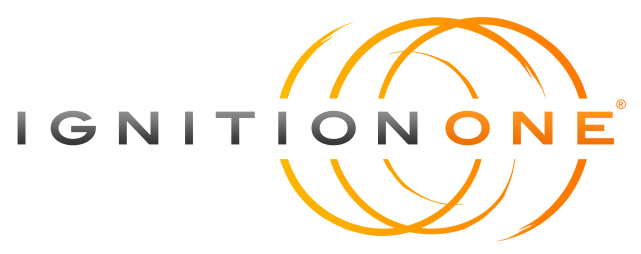 Dave Ragals: Global Managing Director, IgnitionOne
Dave Ragals: Global Managing Director, IgnitionOne PLAs have seen tremendous performance in the year and a half since they launched as a paid offering. Just comparing the key Q4 2013 to 2012, impressions and clicks more than tripled, and spend grew at roughly twice that rate. Even compared to traditional PPC, which also saw huge growth, the rates for PLAs were downright astonishing.
PLAs have seen tremendous performance in the year and a half since they launched as a paid offering. Just comparing the key Q4 2013 to 2012, impressions and clicks more than tripled, and spend grew at roughly twice that rate. Even compared to traditional PPC, which also saw huge growth, the rates for PLAs were downright astonishing.
The key is in the CTR, which is roughly 50% higher than traditional PPC. The simple fact is PLAs put the product, price, and image directly in front of the shopper who raises their hand and says “I want to buy this.” Searchers can virtually window shop from the SERP and know that they’re a click away from buying what they want at the price they’re willing to pay.
The most obvious change coming is Google Shopping Campaigns, which essentially cements the concept that PLAs have gone from an optimizable feeds-based system to an optimization system first and foremost, just one that happens to be supported by a product feed. The other thing to keep an eye on is in the mobile space, where PLAs underperformed in the key holiday weekend last year. Expect a lot of attention on bringing up both CTR and spend for mobile traffic.
About Dave: Dave Ragals serves as Global Managing Director, Search, for IgnitionOne, where he runs the company’s global search marketing business. Mr. Ragals has more than 15 years of online experience. He began his online career with CNN, where he served as V.P., News Features at CNN Interactive, managing the creation of highly-customized content as well as several large business relationships with advertisers and partners.
 Kelly Wrather: Sr. Content Marketer, Kenshoo
Kelly Wrather: Sr. Content Marketer, Kenshoo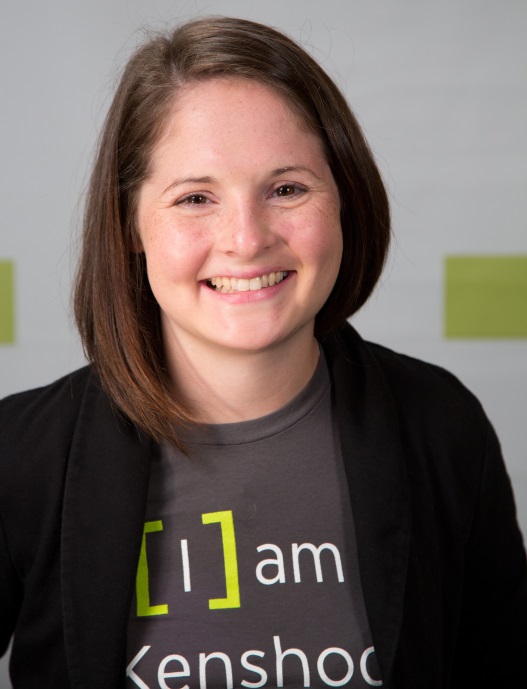 The introduction of Product Listing Ads (PLA) offered retailers an engaging way to showcase their products in prime real estate on the search engine results page (SERP). Its highly visual nature has translated into a very consumer-friendly ad format, giving the phrase “window shopping” a whole new meaning. By supplementing paid search advertising with PLAs, retailers can capture almighty shelf-space on the SERP.
The introduction of Product Listing Ads (PLA) offered retailers an engaging way to showcase their products in prime real estate on the search engine results page (SERP). Its highly visual nature has translated into a very consumer-friendly ad format, giving the phrase “window shopping” a whole new meaning. By supplementing paid search advertising with PLAs, retailers can capture almighty shelf-space on the SERP.
In a recent Kenshoo study, 83% of marketers we surveyed said they find PLA performance to be on par or better than traditional text ads. As retail marketers have adopted PLAs, they have been able to apply more testing and optimization techniques to drive the most optimal performance and as result, have increased their investments. During the 2013 peak end-of-the-year shopping season, Kenshoo global retailers spent nearly 138% more year-over-year (YoY) on Product Listing Ads and saw a 269% YoY increase in revenue, proving the format’s effectiveness.
It’s clear that the search engines are investing in product-focused ad formats. With the introduction of Shopping Campaigns, Google is positioning Google Shopping as a driving force for retailers and committing to an investment in e-commerce. Building on this momentum in the marketplace, the Yahoo Bing Network has just announced availability of its own product-specific ad format, Product Ads, in the U.S.
As this format matures, the engines will continue to innovate to create more robust offerings. Google has begun to focus more on local and mobile features within PLAs as seen through the launch of Local Availability, Local Storefronts, and mobile PLAs. With mobile devices changing consumer shopping behaviors, it’s likely that local and mobile will be two key areas that PLAs and Product Ads have opportunities to expand and evolve.
As for marketers, this increased availability of product-focused ads across engines and continued enhancement to the format should spur further adoption and investment. It’s likely that advertisers will begin to carve out new incremental budgets to support the promotion of their products via PLAs and Product Ads.
From a Kenshoo perspective, we’ve built advanced functionality to enable marketers to integrate PLAs into their search and social campaigns with custom tools for PLA creation, optimization, and attribution. We even have a solution that can take top performing PLAs and automatically turn them into Facebook ads. We see a lot of opportunity for innovation ahead as we move into Google Shopping Campaigns and Bing Product Ads and are excited to bring new offerings to market with our partners at CPC Strategy.
About Kelly: Kelly Wrather is a Sr. Manager of Content Marketing at Kenshoo, a premier Search and Social Platform for advanced digital marketers. Kelly is also a regular columnist at Search Engine Watch.
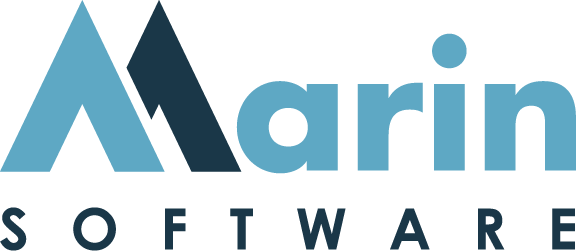 Dan Morris: Sr. Product Marketing Manager, Marin Software
Dan Morris: Sr. Product Marketing Manager, Marin Software We’ve found Google’s Product Listing Ads represent a highly effective channel for online retailers of all sizes, exposing new buyers to new products and driving purchases. Creating ads with rich product information such as price, image, color/size, SKU number, and a brand name creates an engaging user experience that is difficult to get on other marketing channels available today.
We’ve found Google’s Product Listing Ads represent a highly effective channel for online retailers of all sizes, exposing new buyers to new products and driving purchases. Creating ads with rich product information such as price, image, color/size, SKU number, and a brand name creates an engaging user experience that is difficult to get on other marketing channels available today.
We will continue to see significant year-over-year increases in PLA spend directly linked to the rise in competition as more advertisers discover the effectiveness of these ads. Advertisers will continue to allocate more budget toward PLAs and away from text ads. The seemingly overnight success of PLAs and the emergence of hotel price ads (HPAs) foreshadow a search landscape where advertisers, whether in retail, automotive, or financial services, will richer and more engaging, industry-specific ad formats at their disposal. New formats will undoubtedly emerge over the next two years.
In 2014, Google will roll out Shopping campaigns in the US, with full global availability later in the year. Shopping campaigns introduce a new way for retail advertisers to manage and report on PLAs, offering additional benefits in the form of creative flexibility and ad visibility. These and other changes will force retailers to remain agile and invest in new ad technology. Efficient management, reporting, and optimization of Shopping Campaigns will be crucial for remaining competitive and winning the battle for revenue online.
About Dan: Dan Morris is a Sr. Product Marketing Manager at Marin Software, where he has worked since 2010. Dan has over seven years of online marketing and client services experience in the agency and technology fields. Dan also holds an MBA from University of Massachusetts.
 Rick Backus: Co-Founder & CEO, CPC Strategy
Rick Backus: Co-Founder & CEO, CPC Strategy There are a couple things at play here. First, it’s pretty undeniable that online shopping as a consumer behavior has been on the up in the past couple years. Google Shopping is simply a well-timed, very well executed adaption to this new trend, capitalizing on Google’s already huge built-in traffic pool.
There are a couple things at play here. First, it’s pretty undeniable that online shopping as a consumer behavior has been on the up in the past couple years. Google Shopping is simply a well-timed, very well executed adaption to this new trend, capitalizing on Google’s already huge built-in traffic pool.
Product Listing Ads are also the most innovative product ad format available for shoppers. This is because Google’s constantly rolling out new products and updates so that its Search platform can better understand and deliver on Retail Search Intent. Amazon has already established itself as THE premiere Retail Search Intent platform, but it’s clear that the gap is quickly closing. Google’s ability to 1)interpret your product inventory, 2)understand high-intent consumer queries, and 3)match your products with those searches is the key reason why retailers have so much success with Product Listing Ads.
On top of all this, advertisers have so many tools at-hand to optimize their ads with a consistent flow of new rich snippet features (price change call-outs, seller ratings, promotional text, Trusted Stores badges) and advanced bidding options (geotargeting, dayparting, etc.), making PLAs an appealing tool for many retailers. All these features, a CPC model, a new, easier management model in Shopping Campaigns, and the fact that there’s no competition from Amazon in listings, also make Google Shopping a great complement to Amazon Marketplace for retailers.
I see 2 fundamental changes coming on the horizon. First, I think Google will continue to make significant strides to reduce the barriers to entry into Product Listing Ads for retail advertisers. A big aspect of this is managing product inventory, and I see Google leveraging Channel Intelligence and its recent acquisition of Rangespan to simplify inventory and feed management and ultimately offere a managed service for inventory for mid- and small-sized retailers.
This might take longer than 3 years, but I see a Google Marketplace coming. The adversarial ebb and flow relationship of Google and Amazon is very real, and this will be another battlefield for them. A Google Marketplace is well within their power and would most likely be restricted to only merchants with very high seller ratings and an overall good reputation with Google.
Google Shopping is changing again this August, forcing advertisers to adapt to an entirely new strategy for managing and structuring campaigns. It’s so important to be on top of this switch to Shopping Campaigns before then. I’m actually going to be on a webinar with Google on how to make that transition, so I definitely recommend tuning into that May 29th.
About Rick: Rick Backus is CEO of CPC Strategy. As an industry expert on ecommerce and retail search, Rick has spoken at national conferences including IRCE, SearchLove, and SES. Today, Rick focuses his efforts on being the industry authority on the Retail Search.
 Yevgeny Senkevich: Digital Marketing, PureFormulas
Yevgeny Senkevich: Digital Marketing, PureFormulas Product Listing Ads are positioned above the text ads in the search results page, using this prime location they are taking away click volume from ordinary text ads, taking credit for converting consumers who are ready to buy away from text ads and SEO. PLA’s are now the primary way Google offers display advertising for online retailers.
Product Listing Ads are positioned above the text ads in the search results page, using this prime location they are taking away click volume from ordinary text ads, taking credit for converting consumers who are ready to buy away from text ads and SEO. PLA’s are now the primary way Google offers display advertising for online retailers.
Google is making a clear distinction between retail product ads and service based ads. No matter how well your paid search text ads are performing, they will never be number 1 or above the PLA’s. As click volume continues to shift into PLA’s, retailers who take advantage of this new channel will see success as they have seen it grow in the past year. Early adopters who utilize PLA’s right now will benefit the most from the shift in volume.
Product Listing Ads have now taken over a good amount of volume in the SERPS, and they will continue to grow as Google expands reach and relevance for this new channel. Having attended the Catalyst 2014 retail conference in Las Vegas a month ago and heard Vineet Buch (Director of Product Management for Shopping Search, Google) speak about his plans for PLA’s, I think it’s becoming clearer where this is all going. Google wants to take advantage of a booming online retail industry and they will use the PLA’s to do it. Mixing local online retail, mobile, and the PLA’s will significantly impact the consumer market and will be the driving force of products purchased via mobile in your local area. This will become more and more prominent in the next 2-3 years as consumers continue to assimilate into this new age of shopping.
Google wants to take volume share from an emerging Mobile Deals APP space like RetailMeNot, Amazon Price Check, and many others, and their goal is to reach the 2 new types of emerging consumers. The first is the “Web-rooming” shopper identified as first browsing online, then purchasing in a local store. The second is the “Show-rooming” shopper who views products in-store, then purchases online. Providing local businesses with the opportunity to reach these consumers during their buying phase while shopping locally in-store or online will bridge this gap. As we continue to see PLA’s evolve, another trend will emerge where we see Google integrating PLA’s into other aspects of their business like Maps, and Google Places etc. This will provide an additional driving force to mobile/local PLA performance.
Any business looking to sell their products online will have to move into PLA’s ASAP. As it’s still fairly early into adoption, moving quickly can provide the advantage of high quality scores and better Ad Rank for your PLA campaigns. Once this space becomes more competitive and retailers get more sophisticated, it will be hard to unseat competitors who have established their presence early. PLA’s are a completely different beast when compared to paid search, as they are a mix of PPC, SEO, and comparison shopping engines. If you want to implement PLA’s into your initiatives correctly, you have to utilize 3 things: 1) optimize your product feed, 2) create the correct hierarchical tiered ad structure, and 3) manage your bids for efficiency and scale.
About Yevgeny: Yevgeny Senkevich’s background spans from web design and development for small local businesses, to Social Media Marketing and SEO strategy for all the major telecommunications companies like Comcast, Verizon, ATT, Time Warner, Cox. He also managed all analytics for Carnival Cruise-lines website Carnival.com, and has now crossed over into e-Retail strategy and SEM management for PureFormulas.com. His main focus is traffic generation and conversion.
 Jonathan Shaner: Marketplace Specialist, Build.com
Jonathan Shaner: Marketplace Specialist, Build.com Product Listing Ads success is mainly due to Google finally bringing Google Shopping to the forefront of the search experience and giving retailers control. Before PLAs, Google Shopping was free for retailers and this meant Google did not spend much time on the results, functionality, or the customer experience. They also did not push Google Shopping on other Google properties, so the traffic coming in was largely from consumers that knew about it, keeping the discovery rate/new user rate rather low. Conversion rates, and theoretical cost of conversion rates, of these customers were some of the best from any marketing channel so we wanted to get as much traffic from Google Shopping as we could, but there wasn’t much you could do on the free model.
Product Listing Ads success is mainly due to Google finally bringing Google Shopping to the forefront of the search experience and giving retailers control. Before PLAs, Google Shopping was free for retailers and this meant Google did not spend much time on the results, functionality, or the customer experience. They also did not push Google Shopping on other Google properties, so the traffic coming in was largely from consumers that knew about it, keeping the discovery rate/new user rate rather low. Conversion rates, and theoretical cost of conversion rates, of these customers were some of the best from any marketing channel so we wanted to get as much traffic from Google Shopping as we could, but there wasn’t much you could do on the free model.
When Google announced they were changing to a paid model, we knew it was finally our chance to do what we knew best and be able to determine our position in the market along with increased quality traffic we knew was there. We were on the first list of retailers allowed to participate in the PLA program and we instantly saw our traffic increase with conversion rates equal to the free model. Seeing Google Shopping results on SERPS next to PPC ads and replacing traditional PPC ad spots with Google Shopping ads drove customers directly to us and to Google Shopping, where they may have never been before.
Our traffic continued to increase but in true Google fashion – they never give you full controls or all the data for a new product. Bidding at any granular level was difficult and segmenting based on labels mixed with category and brand bids was hard to manage. Google tried to make a product that was different from all their other products and retailers like us let them know constantly that we want the same controls and data as in our traditional PPC campaigns. It took them over a year but with Shopping Campaigns, they are giving much more control to retailers. Much of our bidding structure and strategy we hacked together before this change fit right in to Shopping Campaigns making it possible to do much of what we were trying to do before.
Though PLAs have done a lot to move Google Shopping to a much wider used product, it is still far behind it’s competitors like Amazon, which is THE product search engine. I think they will continue to blur the lines between SERPS and Shopping for product based queries. They have been requiring more from the retailer, such as larger images, 360 images, and as much product data as possible, and they need to make sure they are creating a great experience for the customer with all this data. We have been waiting for a revamp of the current look and feel along with updating some parts of Shopping, such as reviews, that have stayed the same throughout all PLA/Shopping changes. One thing that makes Amazon what it is are customer reviews and their creation of a community around reviews and Google has basically ignored that portion of the experience.
I think because Google has not done a total revamp is a good indicator that there is more on the horizon – a Google Shopping Marketplace. They have been testing many local programs and will even deliver that bottle of wine you forgot to pickup after work for tonight dinner party with Google Shopping Express. This is a Google Marketplace, though they took it a step farther and are delivering the products as well. As neat as that is, us retailers do a great job at delivering the products we know best and we just want Google to create a platform that customers love and allow us to sell directly through Google Shopping. Google Shopping mobile testing and the push from Google for retailers to use and segment to mobile customers is also a good indicator a Marketplace is coming.
A large and growing proportion of purchases on Amazon and eBay come from their mobile platforms and I’m sure Google wants to have a diverse product base and a great shopping and buying experience when they do release a marketplace. This to me is the most exciting place that I see PLAs going for the future and the place Google has to go to continue to be a force.
We’ve been super successful with PLAs, and we’re always looking out for new ways to optimize and grow our PLA program. I’m excited to see what Shopping Campaigns will hold. It really seems like Google is pushing themselves to provide better tools for enterprise-level accounts, so I’m interested to see what type of tools they’ll roll out for Shopping Campaigns.
About Jonathan: Jonathan has been working in retail eCommerce for 8 years professionally and have been with Build.com for two and a half years currently working as a Marketplace Specialist. He lives for data and efficiency.
 Don Moyer: Sr. Online Marketing Strategist, eTundra
Don Moyer: Sr. Online Marketing Strategist, eTundra I think the big success comes from the added control that marketers have with PLA’s. Google is constantly adding new feature sets that are enabling us to control when and what products are being shown. In addition, being a more visual ad that is now displayed more prominently on Google’s SERP’s seems to have led to more consumers clicking on the ads.
I think the big success comes from the added control that marketers have with PLA’s. Google is constantly adding new feature sets that are enabling us to control when and what products are being shown. In addition, being a more visual ad that is now displayed more prominently on Google’s SERP’s seems to have led to more consumers clicking on the ads.
There are a couple things I see happening with PLA’s in the future. The first would be more competition. Seeing as this is a relatively new platform marketers are still honing their skills and learning the system. As people become more experienced and as the platform controls evolve, advertisers will be battling it out for the best placements for their ads. In addition, smaller or lesser experienced competitors that we’re hesitant to go from a free to paid model have had time to learn the platform and may re-enter the market.
Second, I believe Google is ultimately going to create their own marketplace and somehow tie that into PLAs. Marketplaces like Amazon and eBay are big business and I don’t see Google not trying to jump in the mix.
Overall I’m quite pleased with how PLAs have been going. I’ll be interested to see how things shake out once the mandatory change to Google Shopping Campaigns goes into effect in August. Ultimately I’d like to see the platform stabilize a bit and stop going through so many changes as this makes it a bit difficult for us marketers to plan and implement long term strategies.
About Don: Don Moyer is a Sr. Online Marketing Strategist at Tundra Restaurant Supply. Currently, his main focuses are Google PLA and eBay but he has dabbled in most online channels during his 8 years at Tundra. Whenhe’s not working Don enjoys the skiing and fine craft beer of Colorado.
 Dave Rosborough: Paid Search, DiscountFilters.com
Dave Rosborough: Paid Search, DiscountFilters.com Paid search as a whole is successful because it has the ability to subtly (sometimes not so much…) confront people in the comfort of their own homes or anywhere really for that matter. In other words, we’re targeting our ads and placing them at our customers’ fingertips via their favorite digital devices. With PLAs, however, e-commerce advertisers are able to take this a step further and place their actual products at people’s fingertips.
Paid search as a whole is successful because it has the ability to subtly (sometimes not so much…) confront people in the comfort of their own homes or anywhere really for that matter. In other words, we’re targeting our ads and placing them at our customers’ fingertips via their favorite digital devices. With PLAs, however, e-commerce advertisers are able to take this a step further and place their actual products at people’s fingertips.
Essentially, what this is doing is removing 1-2, if not several, clicks your customer would have had to take in order to place an order traditionally on your site. The end result is an easy, hyper-relevant shopping experience where users have complete access to all the product data (i.e. comparing prices, promotions, shipping costs and more) and the ability to make purchases anytime/anywhere. For this reason, as well as those that others have shared, Product Listing Ads have been incredibly successful for e-commerce advertisers in 2013.
I expect Google PLAs to continue growing at a rapid rate over the next three years as the engineers improve the shopping experience and make the listings more prominent. Additionally, I think Google will continue merging AdWords with PLAs via the new Google Shopping campaigns, which should end up being largely beneficial due to increasingly complex reporting abilities and adding even more data granularity at the product level. I believe we also may start to see the emergence of similar shopping experiences being integrated into a handful of the top third-party engines, similar to what Bing just accomplished.
Regardless of what happens and how PLAs evolve, I believe there are several gaps between our products and the ability to control/optimize those products, which Google has already started to refine through their recent integration of PLAs with AdWords. I hope that Google continues improve upon these gaps, so advertisers like ourselves have complete and utter control over every aspect of our product ads. On this note, I see a significant area of opportunity that concerns PLAs and what advertisers can do with AdWords Scripts to automatically manipulate, or even optimize, them. Unlocking a technique of this nature could turn out to be a gold mine for any e-commerce company.
About Dave: My name is Dave Rosborough and I manage roughly $4 million in annual paid search spend for DiscountFilters.com and a few other e-commerce websites that specialize in various forms of home filtration and accessories. I’ve been a part of this industry for 4 years now and I am extremely passionate about what I do. When I’m not at my computer, I enjoy playing soccer and socializing with friends and co-workers. Dave also has his own blog.
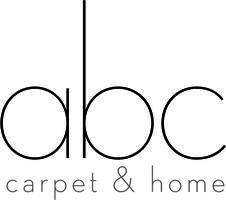 Angela Gruszka: Director of Marketing & Communications, ABC Carpet & Home
Angela Gruszka: Director of Marketing & Communications, ABC Carpet & Home The success of PLAs lies in the visual and product centric nature of the unit. They allow retailers to cut through the clutter of search results and showcase and create awareness of their products in a way that they will standout and increase customer engagement. The simple, straightforward nature of the product photos and information provide consumers with a direct path to purchase, making it a viable channel for advertisers to increase revenue. Combined with text ads, it enables advertisers to have more presence and real estate on the search results page, ultimately increasing the opportunity to achieve a greater ROI.
The success of PLAs lies in the visual and product centric nature of the unit. They allow retailers to cut through the clutter of search results and showcase and create awareness of their products in a way that they will standout and increase customer engagement. The simple, straightforward nature of the product photos and information provide consumers with a direct path to purchase, making it a viable channel for advertisers to increase revenue. Combined with text ads, it enables advertisers to have more presence and real estate on the search results page, ultimately increasing the opportunity to achieve a greater ROI.
Over the next few years, I predict that search will become a more visual and engaging experience with an element of personalization, that is, without compromising the utilitarian nature and purpose of the channel. I foresee PLAs becoming further integrated within the search results page with larger images, a possible social component, and even video. It all comes down to increasing engagement, which has a direct correlation to conversion.
In terms of competition, Pinterest is the dark horse. When we think of search, Pinterest is not necessarily top of mind, however search is becoming inherently more social. Pinterest is making great strides the search arena, already generating significant volume, with the potential of being a major player in search in the coming years. They are just being to get their feet wet with their most recent addition of Guided Search, which I envision will become a major part of Pinterest’s monetization strategy providing new opportunities for advertisers in addition to Promoted and Rich Pins. Bing is another player that is being to establish a greater presence in the paid search game with the recent addition of their product ad format. They are making it rather seamless for advertisers with run concurrent programs with Bing and Google by enabling retailers to import their Google Product feed and offers directly into Bing.
From an advertiser standpoint, the PLA eco-space is beginning to get crowded due to the evident ROI. It is soon going to become very costly for retailers to compete for visibility, similarly to text ads. Google has taken this into account with the current migration from PLAs to Google Shopping. This update will enable advertisers to further optimize and manage their campaigns through enhanced reporting options and a bid simulator to estimate the potential impressions, clicks and cost. The updates with Google Shopping will help improve performance by enabling advertisers to structure their ads with more granularity by product groups making it easier to create product ads that are specific to a particular SKU.
I do not see a marketplace on the horizon, specifically, however, I do think Google is putting great consideration into creating a more robust shopping experience for its partners. One of the forthcoming features of Google Shopping is Local Storefronts, which will enable retailers with a brick and mortar presence to include availability of in-store only product, in addition to product online, in a dedicated area. This new feature will enable local retailers to provide business details, directions, products and related items in area that specific to that retailer.
About Angela: Angela Gruszka is the Director of Marketing and Communications at ABC Carpet & Home. She is a creative brand strategist and communications expert with a passion for technology and innovation. She has over 10 years of experience developing and implementing integrated marketing and communications programs in the design and fashion industries.
 Philippe Gagnon: Sr. Marketing Analyst, Wireless Emporium
Philippe Gagnon: Sr. Marketing Analyst, Wireless Emporium Product Listing Ads have been so successful for retailers because they focus on the single most important element of the buying experience, the product. It’s been especially effective for low-cost retailers because of how apparent and comparative the pricing presentation is on the current grid-style listings. High quality product images combined with the lowest price in the grid makes for quite the compelling ad unit.
Product Listing Ads have been so successful for retailers because they focus on the single most important element of the buying experience, the product. It’s been especially effective for low-cost retailers because of how apparent and comparative the pricing presentation is on the current grid-style listings. High quality product images combined with the lowest price in the grid makes for quite the compelling ad unit.
I suspect that we’ll continue to see a rise in CPC’s for mobile devices as Google makes it more difficult to differentiate device specific data through changes such as Enhanced Campaigns. I also think that Google is continually de-emphasizing their ads to make them seem less like a promotion and more like organic search results. This can already be seen in their new Wiki-style listings which primarily features product details with very little emphasis on store and purchase details.
About Philippe: Philippe Gagnon is a Senior Marketing Analyst at WirelessEmporium.com, the largest retailer of cell phone accessories online. When not engrossed in a pile of Excel spreadsheets, you can find him at the local brewery drinking a pint of craft beer.
 Ryan Dobrin: Director of Marketing, Sylvane
Ryan Dobrin: Director of Marketing, Sylvane There are a number of reasons for this; the main reasons are simply that there is more emphasis on the SERPs, more retailer expertise, & less clutter. We all know that Google is constantly testing and experimenting with the look of their search pages, both on desktop and mobile, almost always trying to be more visually appealing to the searcher. This has led to more of an emphasis and more real estate given to product images associated with Google Shopping. Along with now having multiple listings on one SERP, giving your product more possible clicks, we also have more visual trust clues such as Google Trusted Stores, etc.
There are a number of reasons for this; the main reasons are simply that there is more emphasis on the SERPs, more retailer expertise, & less clutter. We all know that Google is constantly testing and experimenting with the look of their search pages, both on desktop and mobile, almost always trying to be more visually appealing to the searcher. This has led to more of an emphasis and more real estate given to product images associated with Google Shopping. Along with now having multiple listings on one SERP, giving your product more possible clicks, we also have more visual trust clues such as Google Trusted Stores, etc.
As far as retailer expertise goes, that just comes naturally with time. In 2012 when Google announced the change to a paid model, we were all essentially rookies in that specific space. Now with almost two years under our belts, we are getting better and more efficient. Less clutter from retailers who were just on Shopping because it was free was definitely more of a factor for success in that first year, but I believe it continues to help.
I see a continued growth and push from Google in the future. As long as retailers continue to see high sales, advertisers will continue to spend more money, and Google will continue to put more emphasis on this medium. With the new Shopping Campaigns, it just makes it easier for retailer to include more products. I believe this will be a positive in the long run, but in the short run it might make things more cluttered again. I think a lot of us had our PLA campaigns and ad groups pretty well organized and now we just have to re-optimize a bit. And I’m sure there will be more big changes in the future to look forward to!
All in all, I think PLAs are a great program. We have seen constant growth and improvements in our own program since inception, and we will continue to emphasize the program as one of our main sources of advertising.
About Ryan: Ryan Dobrin is the Director of Marketing at Sylvane, a leading online retailer of home air treatment products and appliances. Ryan joined Sylvane in 2012 and is focused on driving qualified traffic and sales to the site through traditional and non-traditional marketing channels.
 I think there are a number of factors that have lead to the success of Product Listing Ads. One is that retailers found that they could get top-of-page placement for their ads at a lower cost-per-click with Product Listing Ads. We are seeing CPCs rise a bit, but CPCs are definitely still lower than top of page CPCs for text ads for a lot of queries.
I think there are a number of factors that have lead to the success of Product Listing Ads. One is that retailers found that they could get top-of-page placement for their ads at a lower cost-per-click with Product Listing Ads. We are seeing CPCs rise a bit, but CPCs are definitely still lower than top of page CPCs for text ads for a lot of queries.
Product Listing Ads are also given premium SERP placement. That premium placement, coupled with the visual nature of the ads themselves lead to higher CTR. Allowing the user to see the product image and the price of an item before he or she even clicks the ad is very likely a contributing factor to the higher conversion rates of Product Listing Ads.
Competition will definitely increase, which we’re seeing already. That will drive CPCs up.
Google is kind of throwing us for a loop, though, with the launch of Shopping Campaigns and the sunset of PLAs. It will likely take a bit of time for program managers to fully understand how to manage and optimize their Shopping Campaigns, since we’re all used to the Product Listing Ad campaign structure. I imagine that Google and third parties will continue to roll out new tools to optimize these campaigns, and that retailers will jump to take advantage of them.
It’ll be interesting to watch the impact of Local Shopping campaigns. I can see those performing well for brick and mortar retailers who sell the type of products people like to touch or try on before they purchase. I think Product Listing Ads will likely be huge for mobile. Again, this is all about that top-of-page placement, and the feeling of immediate results for the user when he or she is shown the price and product image. There’s less competition with text ads on mobile, too, putting the Product Listing Ads front and center on mobile devices.
We’ve been super successful with PLAs, and we’re always looking out for new ways to optimize and grow our PLA program. I’m excited to see what Shopping Campaigns will hold. It really seems like Google is pushing themselves to provide better tools for enterprise-level accounts, so I’m interested to see what type of tools they’ll roll out for Shopping Campaigns.
About Kelli: Kelli Patterson is Moosejaw’s Senior Internet Marketing Manager. She and her team manage strategy and implementation for Moosejaw’s online marketing initiatives, including Product Listing Ad campaigns.
It’s interesting to see that when you ask 13 complete strangers (all of which are or work with major retailers) about Google Shopping, you start to see some major trends developing. These trends are reasons for both how Google has started to exploit Retail Search Intent for advertisers AND why Product Listing Ads are, quite simply, an awesome tool for retailers:
